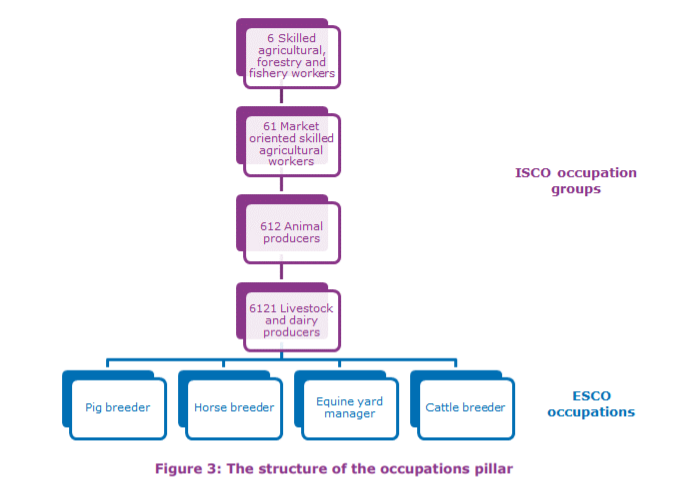Information on qualifications at European level is now displayed in Europass, and comes from databases of national qualifications reflecting the National Qualifications Frameworks that are owned and managed by the EU Member States.
One of ESCO's main missions is to build stronger bridges between the world of education and training and the world of work, in order to reduce skill mismatches and support the better functioning of the labour market. The vision behind ESCO is the provision of a common reference language that could support transparency, translation, comparison, identification and analysis of the content of a qualification, thus helping to indicate how those relate to the skills and occupations needed across occupations and sectors. ESCO does so in multiple ways.
-
ESCO supports education and training systems in the shift to learning outcomes that serves better the labour market needs. Organisations that provide data on qualifications can use ESCO to annotate learning outcomes’ descriptions with skills terminology, thus integrating knowledge, skills and competence concepts. This helps learning institutions to express their learning outcomes in a way that facilitates the understanding of their qualifications by labour market actors and to attract learners from within and across borders. The Commission is conducting a pilot project in order to test automated linking of learning outcomes of qualifications with ESCO skills in different languages and has developed a dedicated IT tool to support national authorities in this exercise.
-
ESCO skills and occupations can be used to provide jobseekers and learners with tailored suggestions of learning and training opportunities. Digital platforms can use ESCO to provide citizens with information on learning opportunities, suggest courses, develop tailor made training opportunities and recommend learning paths based on people’s skills. Career guidance providers can use ESCO to provide guidance services and recommend relevant training based on the skills set and career aspirations of an individual.
-
ESCO can be used for the validation of informal and non-formal learning. The clear and detailed learning outcomes that are provided through ESCO can be used to identify, document, assess and certify the skills and experience that an individual has acquired through informal or non-formal learning.

